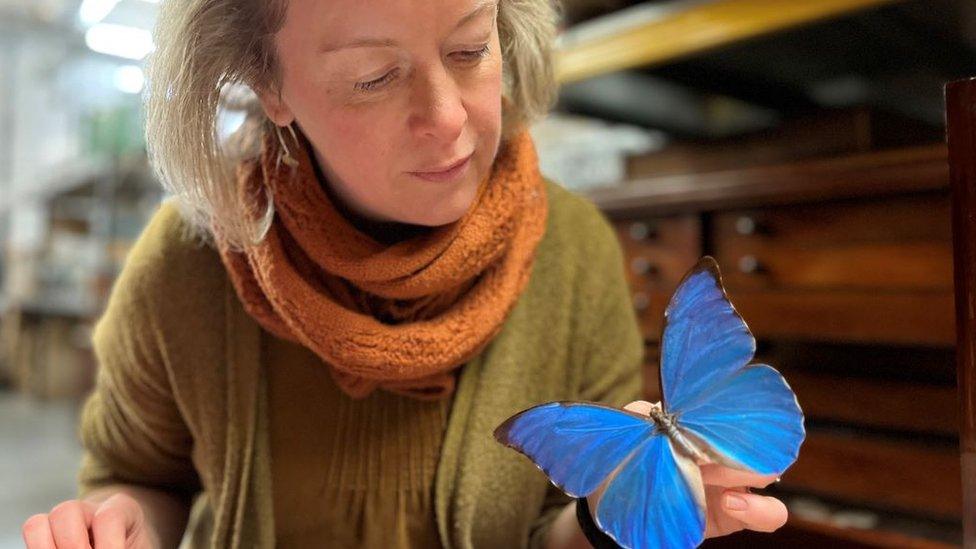Mammoth clean-up task for Ice Age tusk
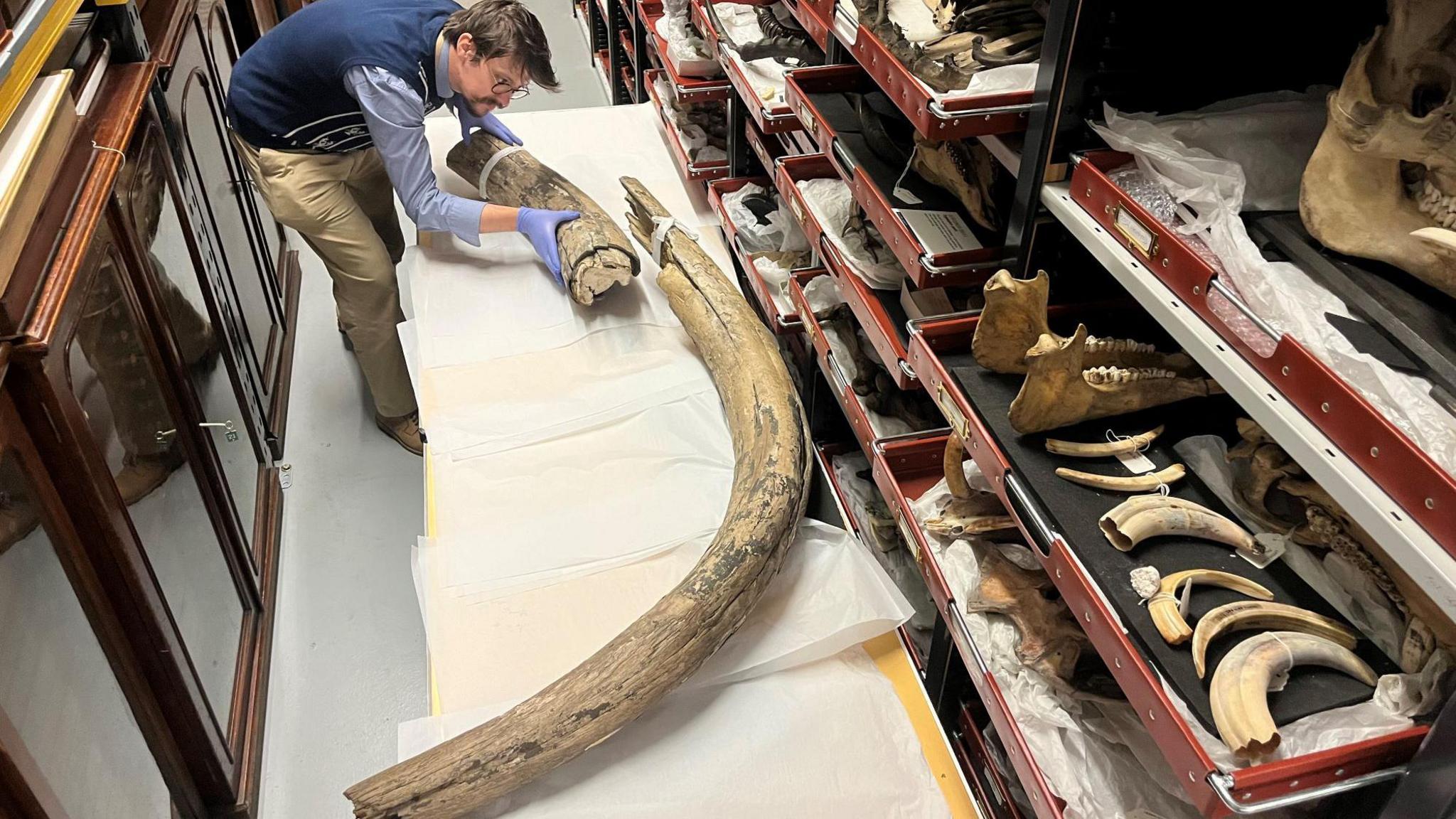
The clean-up will help conserve the tusk for the future
- Published
A woolly mammoth tusk unearthed in a coal mine where it had been buried for thousands of years has been carefully conserved during an unusual clean-up job.
Belonging to the long extinct Ice Age mammal, the 7ft (2m) long tusk was discovered in the former Oxbow open cast mine near Temple Newsam, in Leeds, in the 1960s.
Museum records detail how the tusk, which is in two pieces, was found beneath the gravelled floodplain of the River Aire.
The unusual find is among a vast array of objects undergoing an annual deep clean by experts at the Leeds Discovery Centre.
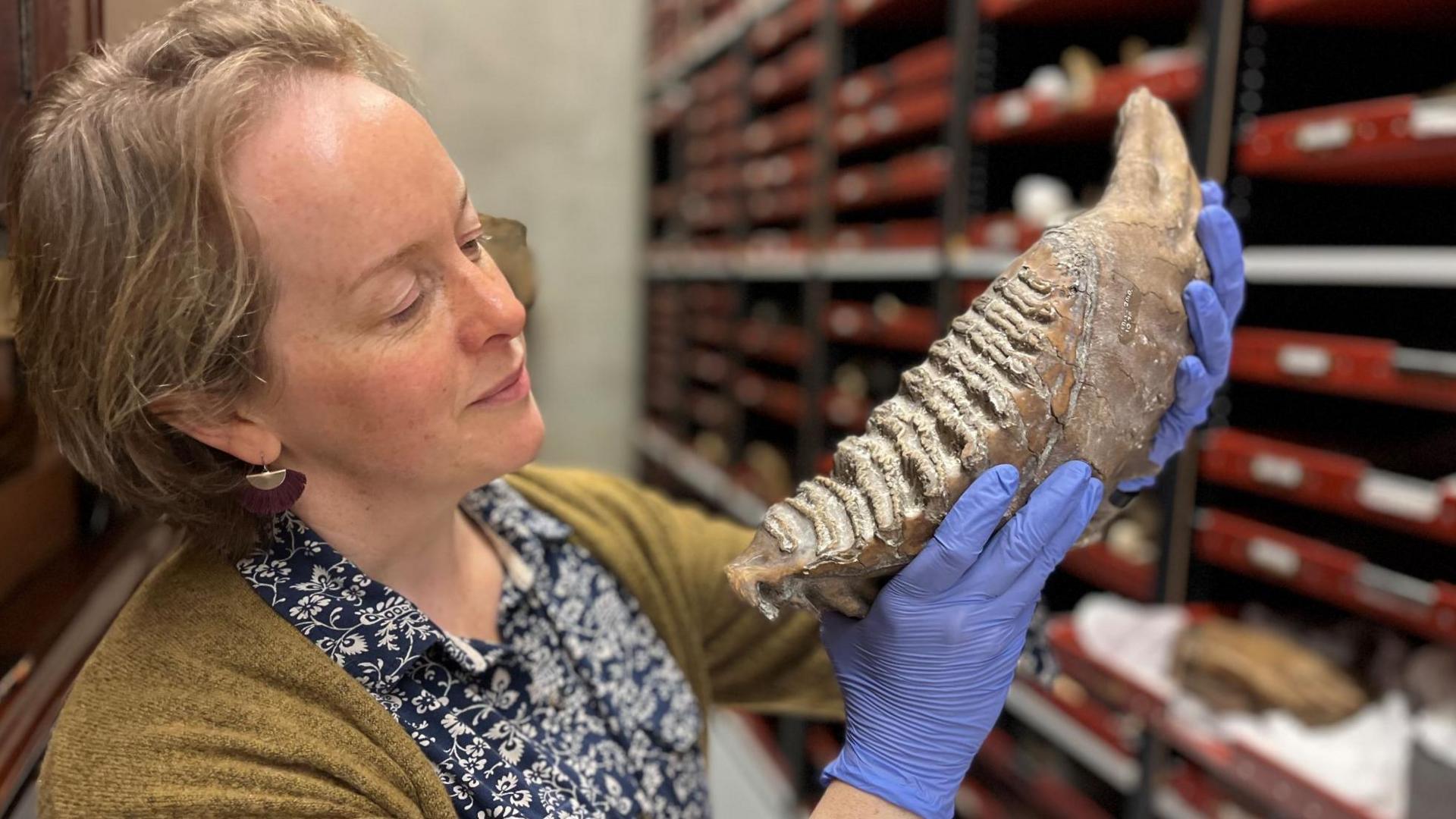
A mammoth tooth is also among the collection of unusual objects kept at the Leeds Discovery Centre
Dating from a period of glaciation when a huge sheet of ice covered large parts of northern Europe, including the UK, the tusk, made up of enamel and dentin, is evidence that mammoths once roamed the frozen Yorkshire landscape.
Clare Brown, Leeds Museums and Galleries' curator of natural sciences, described the tusk as an "enormous, great big tooth" which needed gentle manoeuvring in order to be cleaned.
"It's quite a responsibility because it is very, very old and it is really quite delicate for something so big and heavy, so you have to make sure you handle it correctly," she said.
She said the tusk offered a glimpse into the prehistoric landscape of Leeds.
“It’s hard to imagine today that mammoths once lived here in Yorkshire, so we’re very fortunate to have such a remarkable, tangible piece of evidence that thousands of years ago, these astonishing animals once walked in the places we know today," she said.
Different species of mammoth lived in Africa, Europe, Asia and North America for more than six million years before they eventually became extinct about 4,000 years ago.
Sharing a common ancestor with modern elephants, they were distinguished by their enormous curved tusks and adaptations to the colder climate, which sometimes included a thick layer of woolly fur.
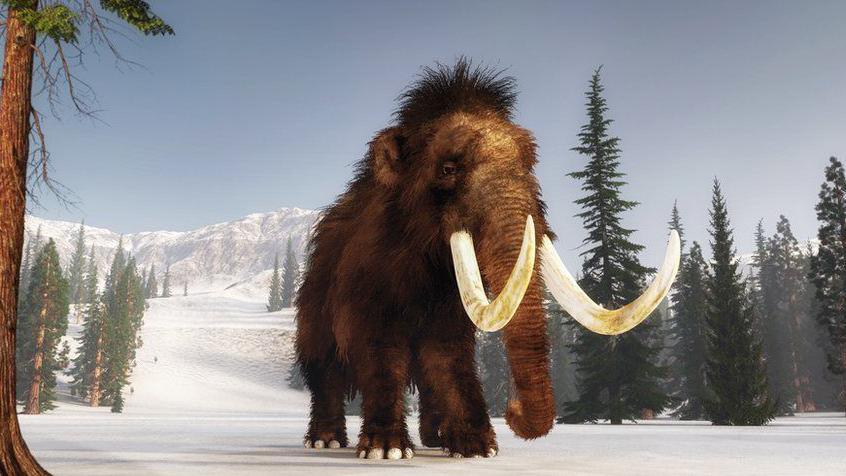
The tusk is thought to have belonged to a species like a woolly mammoth
Ms Brown said conserving such objects at the centre in Carlisle Road was important for preserving and protecting "so many different facets of history".
She added: "I always say that we're separated from history by time and space, but when you're with an object, you're only separated by time because you're in the same space as this amazing thing.
"To be connected to something that lived all those years ago and evidence of its existence, it's an absolute privilege."
Home to more than one million objects, the Leeds Discovery Centre is used to store parts of the Leeds collection not currently on display.
Listen to highlights from West Yorkshire on BBC Sounds, catch up with the latest episode of Look North or tell us a story you think we should be covering here, external.
Related internet links
More stories like this
- Published1 May 2024
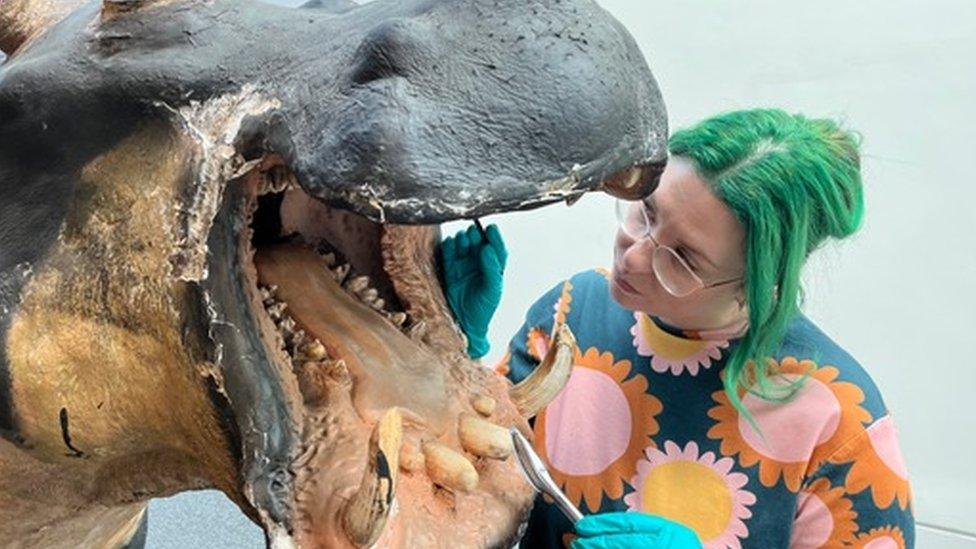
- Published11 February 2024
